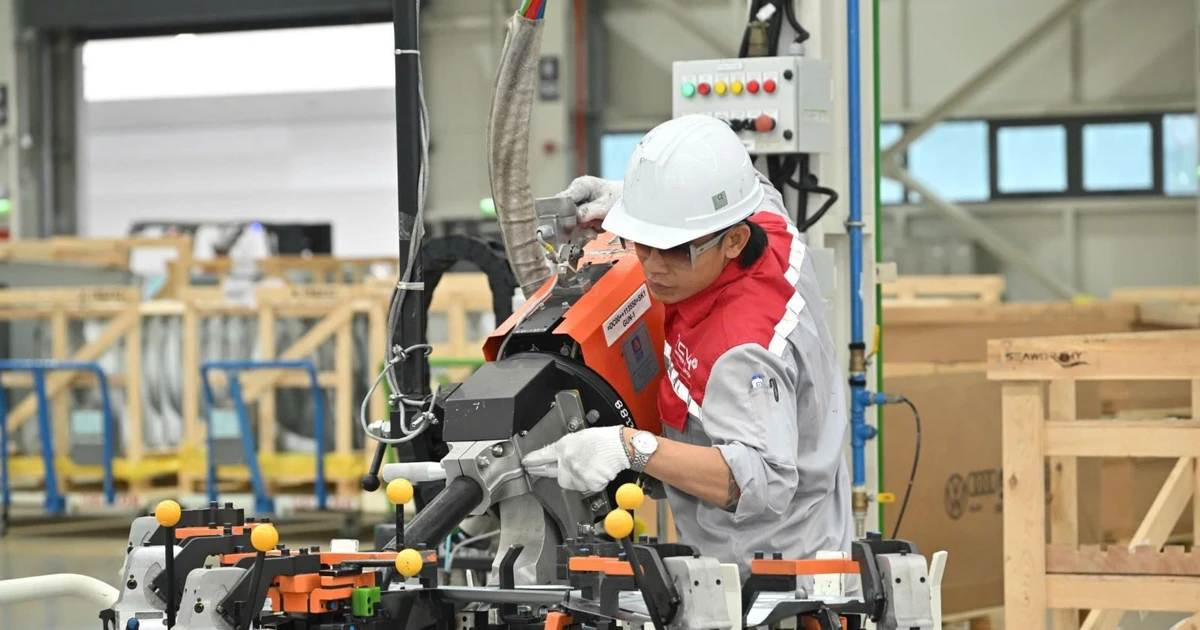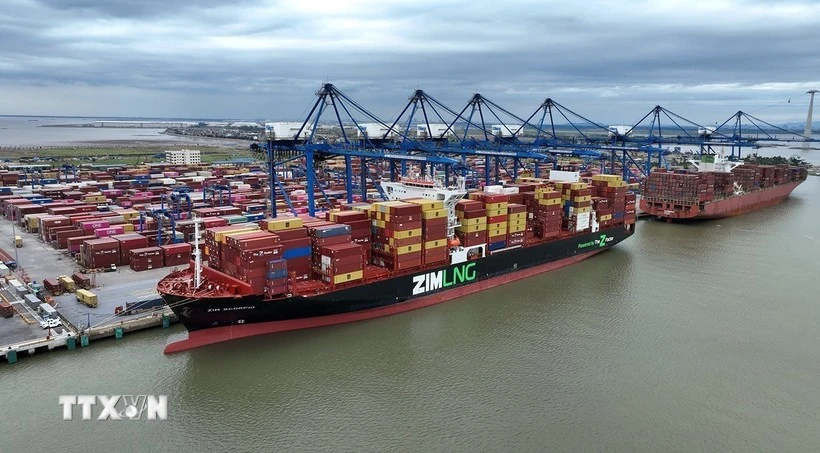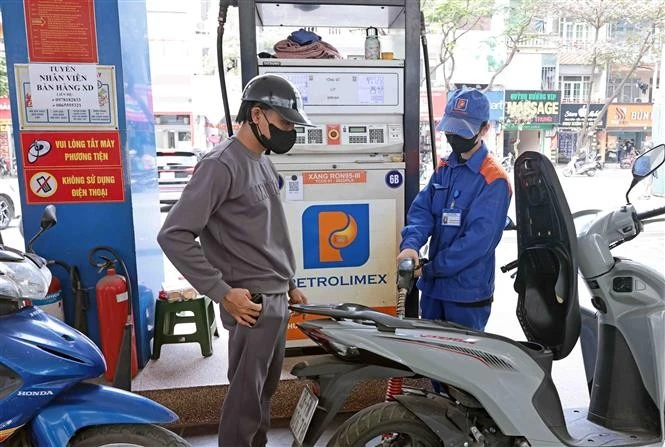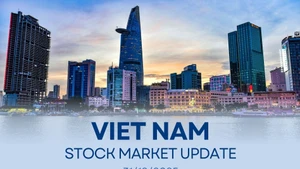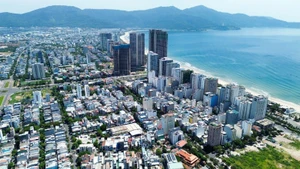Fierce race in the retail market
At the end of February, Uniqlo - a global fashion retail brand from Japan announced, that it would expand its operations in the southern province of Binh Duong, with the plan to open its first store in this city in Spring/Summer 2023.
This is the first store of Uniqlo in Binh Duong and the 16th store of Uniqlo in Vietnam.
Uniqlo's first store in this city will be located at Aeon Mall Binh Duong Canary, one of the largest commercial centres in Binh Duong with full facilities, suitable for a variety of customers, especially families.
Vietnam's retail market is evaluated as having potential and has a high growth rate and attracted a lot of foreign corporations and enterprises to invest in.
Along with Central Retail Group's investment in Vietnam at the end of February, the good news from the beginning of this year shows that Vietnam's retail market is increasingly attractive to foreign investors.
Accordingly, right from the early 2000s, Vietnam's retail market had the highest growth rate in the world, with an average rate of 25% per year and markedly increased when Vietnam joined the WTO.
Even during the 2007-2009 period, when the global economy fell into recession, the growth rate of Vietnam's retail market remained at 18-25%.
Therefore, the market at this time was quite bustling with the participation of foreign enterprises, such as Cora (France), Parkson (Malaysia), Metro (Germany, later Thailand), and Melinh Plaza (Bahamas).
Domestically, systems such as Saigon Co.op, Satra, and Hapro, also gradually laid the foundation, helping the market move in the direction of modern development, connecting domestic manufacturers and importers of goods, moving according to the market of residential areas, creating convenience in shopping and consumption.
However, in January 2015, when Vietnam officially allowed 100% foreign-owned retail companies to be established and operate in Vietnam, the market became more and more competitive.
Accordingly, a series of big names such as Aeon - Japan, Lotte - the Republic of Korea, Crescent Mall - Taiwan (China) and retail groups from Thailand and Singapore, have landed in Vietnam in turn.
These investors have a methodical investment strategy, aimed at capturing Vietnam's potential retail market share.
Along with the rise of domestic enterprises, Vietnam's retail market is increasingly prosperous.
According to the General Statistics Office, in the first two months of 2023, the total retail sales of consumer goods and services were estimated at 994.2 trillion VND, up 13% over the same period last year (in the same period in 2022, up 0 .9%), if excluding the price factor, it increased by 9.2% (the same period in 2022, it decreased by 1.1%).
 |
| A customer at a WINCOMMERCE shopping mall (Photo: VNA) |
Senior Director of Savills Vietnam Su Ngoc Khuong said, that retailers around the world when looking at Vietnam, all agree that this is a lucrative market.
With a population of more than 100 million people and the purchasing power of the people here is very good. Therefore, many retailers around the world invest in Vietnam, he noted.
Vietnamese retail businesses are not left out
In the face of the rapid entry of foreign retailers, through the continuous opening of new trade centres, shopping malls and supermarkets, as well as convenience stores, domestic retail businesses have also been learning the development trend of the world, to improve competitiveness and regain the market.
Accordingly, in the commercial centre segment, domestic names such as Vincom, Van Hanh Mall, and Sense City, have gradually created a foothold and invested in themselves, in an ideal development model with a separate identity.
Deputy General Director of Van Hanh Mall Nguyen Hung Hieu said, that after 5 years of establishment and development, today, the highlight of Van Hanh Mall is Phuong Nam book city and the largest CGV cinema, the largest Citigym, hypermarket Co.opXtra, Power Bowl entertainment area, home appliance store from the US Ace Home Center, dozens of famous brands of clothing, shoes, jewellery, cosmetics and more than 50 domestic and foreign culinary brands.
The development criterion of Van Hanh Mall is to diversify products and focus on many prestigious brands, as well as customer experience.
For the supermarket retail segment, domestic names such as Saigon Co.op, Satra, and Winmart, are also constantly innovating their operating models, adapting to the changing trends of the market to capture market share.
Accordingly, during 2016, more than 50% of the domestic retail market share belonged to foreign enterprises, up to now, Vietnamese retail enterprises are accounting for about 70-80% of the number of points of sale nationwide.
In the race to dominate the domestic retail market share, Vietnamese businesses said that, although the market is highly competitive, with the advantage of understanding Vietnamese consumers and changes to catch up with trends, domestic businesses believe that they will find a solid footing.
For example, Saigon Co.op, a pure Vietnamese retailer with more than 30 years of experience, is taking the leading position in the market.
To do this, Saigon Co.op said that it must constantly change according to trends, such as developing diversified retail models, implementing digital transformation, restructuring human resources, governance, and streamlining services.
In particular, in the operation strategy of 2023, this retailer has set an orientation to continue to focus resources to correct and strengthen the system's activities and improve business efficiency, in which profit remains the top priority, to create an accumulation and sustainable development foundation for the future.
Vietnam's retail industry has a market size of 142 billion USD, forecasted to increase to 350 billion USD by 2025 and continues to be one of the potential areas. Therefore, the race for retail market share in Vietnam will be even more fierce in the coming time.
However, the “door to win” is still open to all, including domestic enterprises, if the business and investment strategy is methodical, and in the right direction, according to the tastes of consumers.


